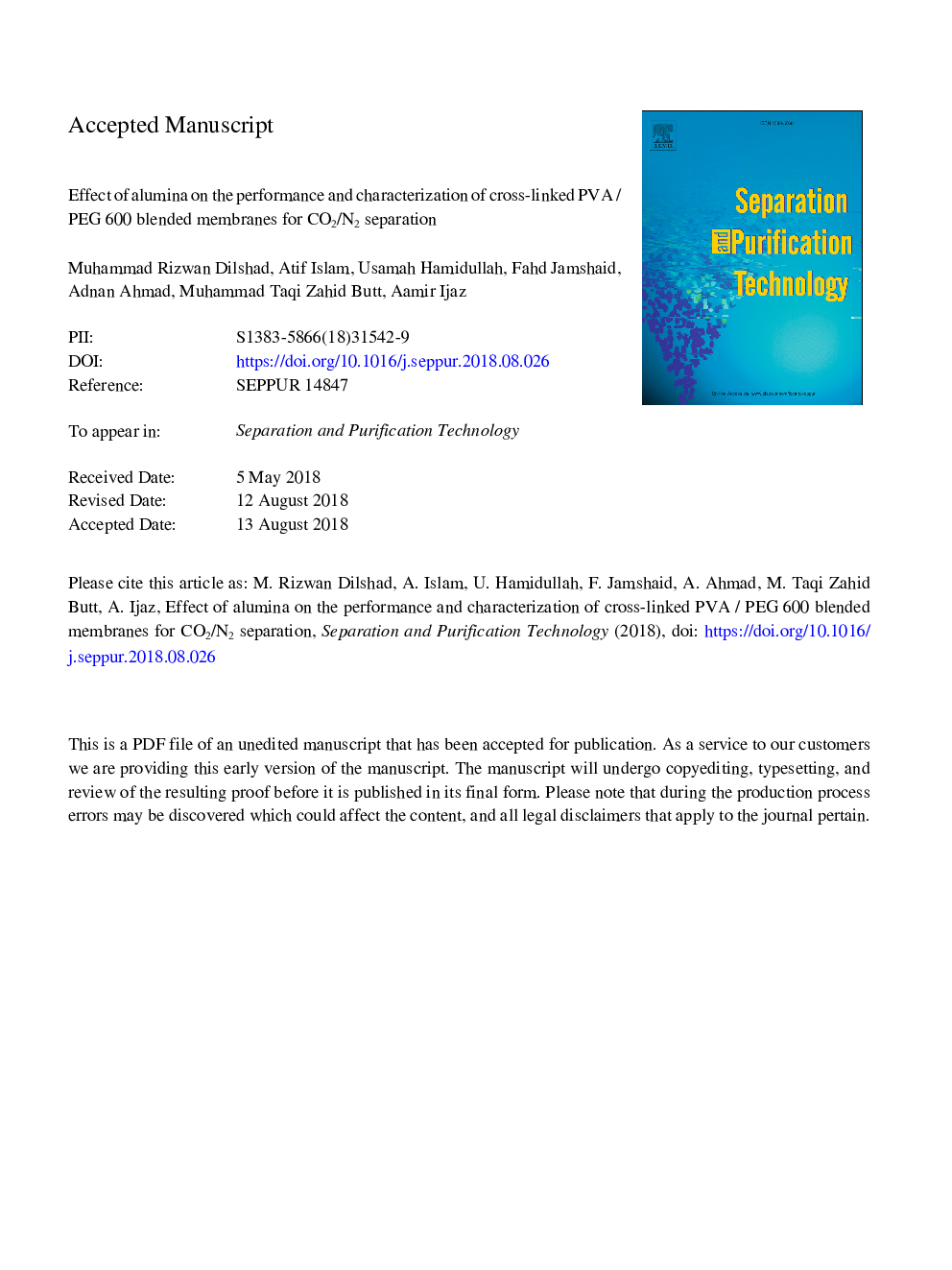| Article ID | Journal | Published Year | Pages | File Type |
|---|---|---|---|---|
| 11003295 | Separation and Purification Technology | 2019 | 32 Pages |
Abstract
In this work, poly(vinyl) alcohol (PVA)/poly(ethylene) glycol (PEG) 600â¯g/mol cross-linked membranes with different alumina (Al2O3) content were synthesized. The membranes were then characterized by FTIR, TGA, DSC, SEM, mechanical strength and permeation properties for carbon dioxide and nitrogen gases at different operating temperatures. The FTIR results confirmed the acetal linkages of cross-linking at 1083â¯cmâ1 and the presence of stretching and bending peaks of Al-O bond at 598 and 444â¯cmâ1, respectively. TGA results showed that the thermal stabilities of the membranes improved with the addition of alumina particles. DSC analysis proved that the glass transition temperature of the membranes increased with the addition of alumina content. SEM images confirmed the uniform distribution of alumina particles in the membranes. Sol gel testing was also carried out to determine the degree of swelling and gel content. It was also concluded that at 25â¯Â°C and 1.5â¯bar, 6â¯wt.% Al2O3 filled membrane demonstrated maximum ideal selectivity of CO2/N2 as 79.8 and the highest permeability of CO2 as 394 Barrers, which surpassed the Robeson upper bound limit 2008. It was also found that the increase in temperature resulted in enhancement of CO2 permeability of alumina filled membrane at the cost of reduction in CO2/N2 ideal selectivity and at 70â¯Â°C; optimum gas separation properties were achieved.
Related Topics
Physical Sciences and Engineering
Chemical Engineering
Filtration and Separation
Authors
Muhammad Rizwan Dilshad, Atif Islam, Usamah Hamidullah, Fahd Jamshaid, Adnan Ahmad, Muhammad Taqi Zahid Butt, Aamir Ijaz,
